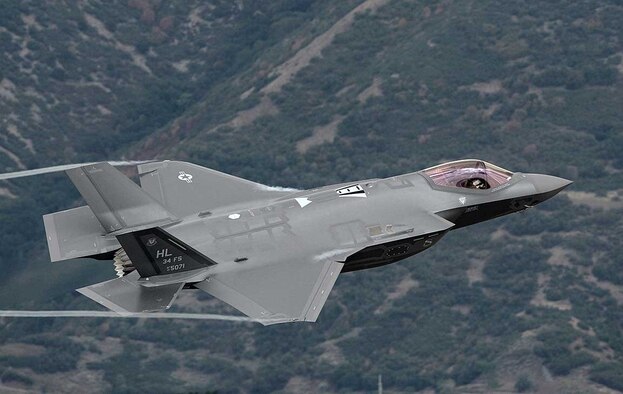The Air Force Sustainment Center is making plans to establish organic software sustainment capability for the F-35A Lightning II.
Vice Adm. Mat Winter, the Joint Strike Fighter program director, requested Naval Air Systems Command and Air Force Materiel Command develop depot activation plans for software sustainment on their respective variants of the F-35.
“The F-35 Lightning II Joint Program is approaching completion of system development and demonstration and transitioning to production, follow-on modernization, and sustainment,” Winter wrote in a June 26 memorandum. “As production ramps up and the global fleet size rapidly grows over the next few years, the program is at a critical junction in making software sustainment assignments to meet operational requirements.”
The multi-role F-35 combines low-observable technologies with state-of-the-art sensor fusion, advanced air-to-air and air-to-ground weapons. The core of its lethality and survivability ultimately relies on computer hardware and software.
The program office assigned nine software integration functions to the AFSC and seven to the Navy.
AFSC Commander Lt. Gen. Lee K. Levy II noted his workforce includes a large number of software developers to support the fifth-generation fighter fleet, which is expected to grow as the center postures for the new workload in support of the F-35.
The 402nd Software Maintenance Group, Warner Robins Air Logistics Complex at Robins AFB, Gerogia, will tentatively be responsible for functions in the areas of F-35 communications and mission systems.
Ogden ALC’s 309th SMXG at Hill AFB, Utah, is currently planned to oversee pilot and processor systems, the autonomic logistics information system and integration.
“The future of air dominance will revolve around software, but the dedication and ingenuity of our people will be key to our success,” Levy said. “The Air Force Sustainment Center is ready to take on this new workload and complete these missions to make and keep the F-35 even more lethal and capable.”
The Air Force declared initial operational capability for the F-35A in August 2016 and the JSF program is in low-rate initial production for the Air Force, Navy, Marine Corps, international partners and allies including Israel, Japan and South Korea.
The ALCs are working closely with a joint Defense Department organic transition team comprised of Air Force and Navy members, who have formulated the initially recommended software sustainment assignments, said Donna Frazier, the Robins AFB 402nd SMXG director.
“The transition team is also developing the overall F-35 Software Sustainment Transition Plan,” she said.
At Hill AFB, the Ogden ALC will build on successful software work already performed on the F-16 Fighting Falcon and F-22 Raptor, said Kelly Capener, the 309th SMXG director.
AFMC and NAVAIR sustainment organizations and their industry partners expect to provide initial implementation plans to the Joint Program Office within the next 180 days. Winter said the plans should include specific centers of industrial and technical excellence designations, timelines and resource requirements to meet statute implementation no later than four years after achieving IOC.
Levy said the F-35 organic software workload will be performed by a mix of experienced software engineers moving over from other systems, coders and developers from other commands, and new hires.
“In order for us to be able to sustain and maintain fifth- and sixth-generation aircraft, we need to have a fifth- and sixth-generation workforce,” Levy said. “As a result, the Air Force Sustainment Center has been working very diligently to put ourselves in a position to do just that.
“I’m confident our software maintenance groups will be able to tackle this new workload with flying colors, allowing us to do what we do best and that’s provide combat power for America,” Levy added.
Source:-af.



